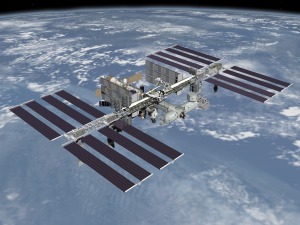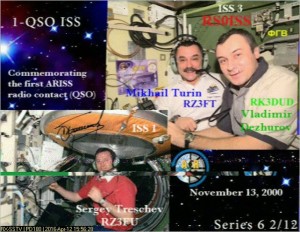
A Tanusha CubeSat
On June 20 and 21, the Tanusha satellites will be connected to an antenna on the ISS Russian Service Module and transmit voice messages on 437.050 MHz FM with 145.800 MHz FM relay.
The AMSAT-NA website says:
ARISS-Russia, in collaboration with the Southwest State University in Kursk, Russia, are developing a series of educational CubeSat satellites called Tanusha.
Two Tanusha CubeSats were developed by students at Southwest State University and were hand-deployed by cosmonauts during an August 2017 extravehicular activity. These two CubeSats are performing cluster flight experiments through communications links.
A second set of CubeSats, Tanusha 3 & 4 were launched earlier this year and are currently on-board ISS. Tanusha 3 & 4 are planned to be hand deployed by Cosmonauts in August. They will perform even more comprehensive cluster flight objectives than Tanusha 1 & 2.
On June 20, Tanusha 3 will be connected to one of the ARISS Service Module antennas and will transmit from 0730-1200 UTC on 437.05 MHz. These FM transmissions will include greetings from students in several languages, including Russian, English, Spanish and Chinese.
On June 21, Tanusha 4 will be connected to one of the ARISS Service Module antennas and will transmit from 0730-1200 UTC on the same frequency: 437.050 MHz.
The ARISS-Russia team plan to also retransmit these signals on the standard ARISS 2-meter downlink, 145.80 MHz using the JVC Kenwood D700 radio that is still on-board ISS. All are invited to listen to the CubeSats from ISS on 437.050 and/or 145.800 MHz FM.
Note: the Doppler shift for the 437.050 MHz signal will be +/-10 kHz.
Source https://www.amsat.org/upcoming-ariss-russia-voice-greetings-sstv-transmissions-from-the-iss/
How to hear the ISS, links to online tracker, online 145/437 MHz radios, etc
https://amsat-uk.org/beginners/how-to-hear-the-iss/









